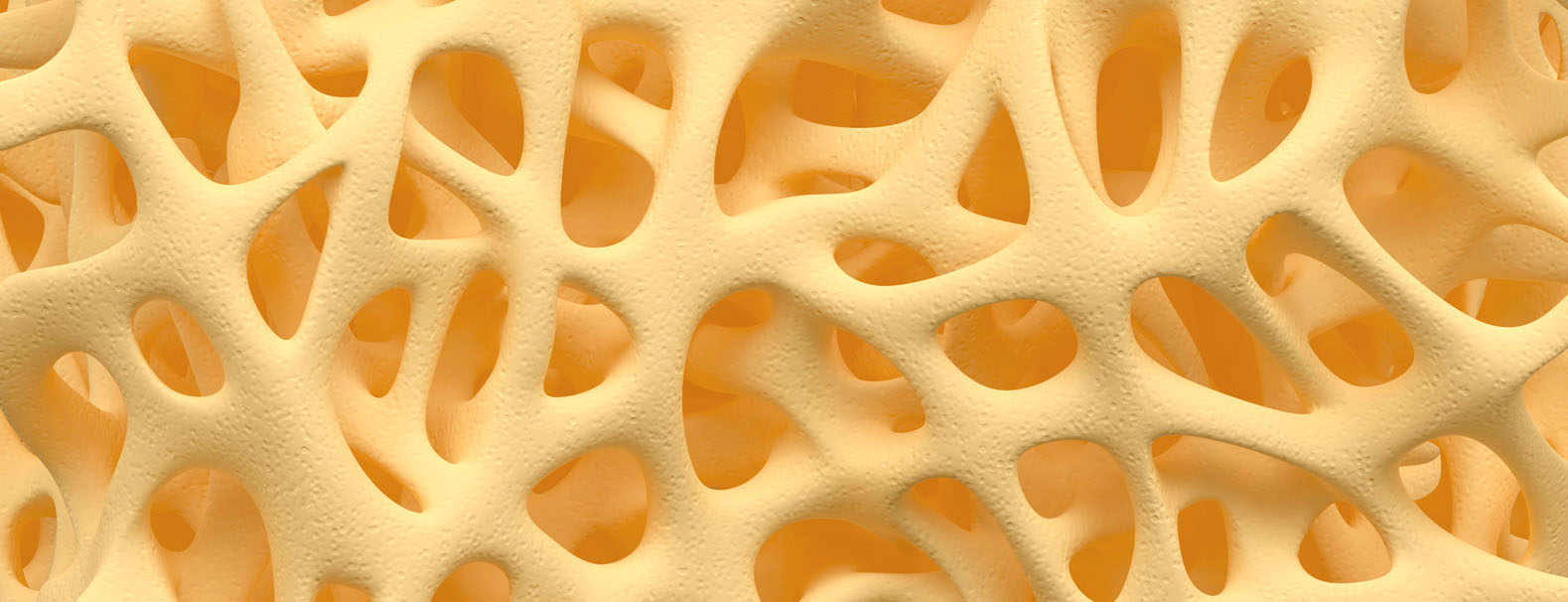Osteoporosis may be primary or secondary associated with another disease. For the latter form, both the pathological processes of the underlying condition itself and the use of certain drugs such as glucocorticoids play a crucial role. New findings in this area were discussed at the EULAR Congress in Rome. What therapeutic measures are required for the most common form of secondary osteoporosis induced by glucocorticoids? And what new treatment approaches are in development for patients with primary, postmenopausal osteoporosis?
“Primary osteoporosis is associated with increasing age and occurs in postmenopausal women as well as men without the presence of underlying disease,” explained Prof. Frank Buttgereit, MD, Rheumatology and Clinical Immunology, Charité Berlin, by way of introduction. “The secondary form, on the other hand, is caused by disease or a specific medication; it is defined by low bone mass with alterations in the microarchitecture of the bone, resulting in fragility fractures. Glucocorticoid-induced osteoporosis (GIOP) is the most common type of secondary osteoporosis.”
Diseases associated with osteoporosis also include rheumatoid arthritis, systemic lupus erythematosus, or ankylosing spondylitis. One of the new findings in this area is that some patients with rheumatoid arthritis develop functional autoantibodies to osteoprotegerin (OPG). These are associated with disease activity and increased bone resorption [1].
Another discovery comes from a controlled cross-sectional study [2]: Bone mineral density (BMD) is negatively related to carotid intima-media thickness (cIMT). Patients with systemic lupus erythematosus have increased atherosclerosis compared with the control group, i.e., higher cIMT with lower BMD. Specifically, this means that in this population, cardiovascular risk assessment should occur in parallel with diagnosis and treatment of bone loss. Conversely, when atherosclerosis is detected, the risk of osteoporosis must be raised and addressed.
“Osteoporosis is also a common problem for patients with ankylosing spondylitis. According to new data, the prevalence is 25%, and vertebral fractures occur in about 10%,” says Prof. Buttgereit.
Glucocorticoids and osteoporosis
Osteoporosis is also strongly associated with giant cell arteritis, which is probably related to giant cell arteritis itself, but also to its treatment (glucocorticoids). According to a recent retrospective study, the relative risk of osteoporosis in 4671 patients with giant cell arteritis is 2.9 [3]. 33.4% had received a cumulative glucocorticoid dose of ≥10 g.
“Glucocorticoids are widely used: About 1.2% of the U.S. population takes steroids. In Sweden, it was found that 49% of 58,102 rheumatoid arthritis patients studied were receiving glucocorticoids in 2008,” Prof. Buttgereit explained.
What principles apply to GIOP management? For prevention, generally use the lowest possible glucocorticoid dose (reduce dose if possible). Glucocorticoid administration therapy schedules should be adjusted. Attention should be paid to sufficient intake of calcium, vitamin D and protein, as well as regular weight-oriented physical activities. Prophylactic treatment with vitamin D and calcium supplements may be recommended. Tobacco and alcohol are to be avoided. Surveying the risk of falls and providing advice adapted to this helps to prevent falls.
Overall, anti-osteoporotic therapy should be given as early and as long as possible in patients at increased risk of fracture [4]. For first-line osteoporosis therapy, bisphosphonates such as alendronate, etidronate, risedronate, and zoledronate, as well as teriparatide, are primarily recommended. “There is no convincing evidence that GIOP and postmenopausal osteoporosis respond differently to anti-osteoporotic therapies,” he said.
Treatment approaches
Bone resorption inhibitors: Bisphosphonates remain the mainstay of osteoporosis therapy. The problem is that while they reduce the risk of fractures in the spine and hip by 50%, non-vertebral fractures are reduced by only 20%. In addition, potential side effects must be considered. Selective estrogen receptor modulators (SERMs) such as raloxifene offer another way to reduce bone resorption. Denosumab also belongs to the group of bone resorption inhibitors.
Odanacatib is a not yet approved specific inhibitor of cathepsin K. This enzyme is centrally involved in the degradation of bone matrix via osteoclasts. Odanacatib blocks cathepsin K but leaves osteoclasts functionally intact and thus does not interfere with signal transduction between osteoclasts and osteoblasts. The exchange between the two cell types is fundamental to new bone formation, according to new research. A phase III trial in postmenopausal women with osteoporosis was stopped due to early observable robust interim efficacy data and a good benefit-risk profile [5]. A blinded extension phase with 8256 patients is ongoing. Interim published efficacy data showed that odanacatib produced a relative risk reduction for hip fractures of 47% and for vertebral fractures of 72%, and resulted in a significant increase in bone density at the lumbar spine and hip.
Bone-building stimulants: Teriparatide stimulates bone formation and, if the indication is right, can be a very effective therapeutic option. Abaloparatide is also currently in development – with promising results [6]. In the field of monoclonal antibodies, Romosozumab, an antibody directed against sclerostin, an inhibitor of osteoblast activity, should be mentioned. A phase II study in postmenopausal women has already shown good effects on bone density and markers of bone formation [7]. An extension of this study was also presented at EULAR 2015 [8]. Bone density values continued to increase after two years of romosozumab treatment and subsequent switch to denosumab (over one year). If, on the other hand, the patient was switched to placebo after two years, the values dropped again.
Source: EULAR Congress, June 10-13, 2015, Rome.
Literature:
- Hauser B, et al: Autoantibodies to osteoprotegerin are associated with increased bone resorption in rheumatoid arthritis. Ann Rheum Dis 2015 Apr 29. pii: annrheumdis-2014-207219.
- Ajeganova S, et al.: Bone mineral density and carotid
atherosclerosis in systemic lupus erythematosus: a controlled cross-sectional study. Arthritis Res Ther 2015 Mar 25; 17(1): 84. - Petri H, et al: Incidence of giant cell arteritis and characteristics of patients: data-driven analysis of comorbidities.
Arthritis Care Res (Hoboken) 2015 Mar; 67(3): 390-395. - Rizzoli R, Biver E: Glucocorticoid-induced osteoporosis: who to treat with what agent? Nat Rev Rheumatol 2015 Feb; 11(2): 98-109.
- Bone HG, et al: Odanacatib for the treatment of postmenopausal osteoporosis: development history and design and participant characteristics of LOFT, the Long-Term Odanacatib Fracture Trial. Osteoporos Int 2015 Feb; 26(2): 699-712.
- Leder BZ, et al: Effects of abaloparatide, a human
parathyroid hormone-related peptide analog, on bone
mineral density in postmenopausal women with osteoporosis. J Clin Endocrinol Metab 2015 Feb; 100(2): 697-706. - McClung MR, et al: Romosozumab in postmenopausal women with low bone mineral density. N Engl J Med 2014 Jan 30; 370(5): 412-420.
- McClung MR, et al: [Op0251] Effects Of 2 Years Of Treatment With Romosozumab Followed By 1 Year Of Denosumab Or Placebo In Postmenopausal Women With Low Bone Mineral Density. Ann Rheum Dis 2015; 74(Suppl2): 166.
HAUSARZT PRAXIS 2015; 10(9): 34-36











